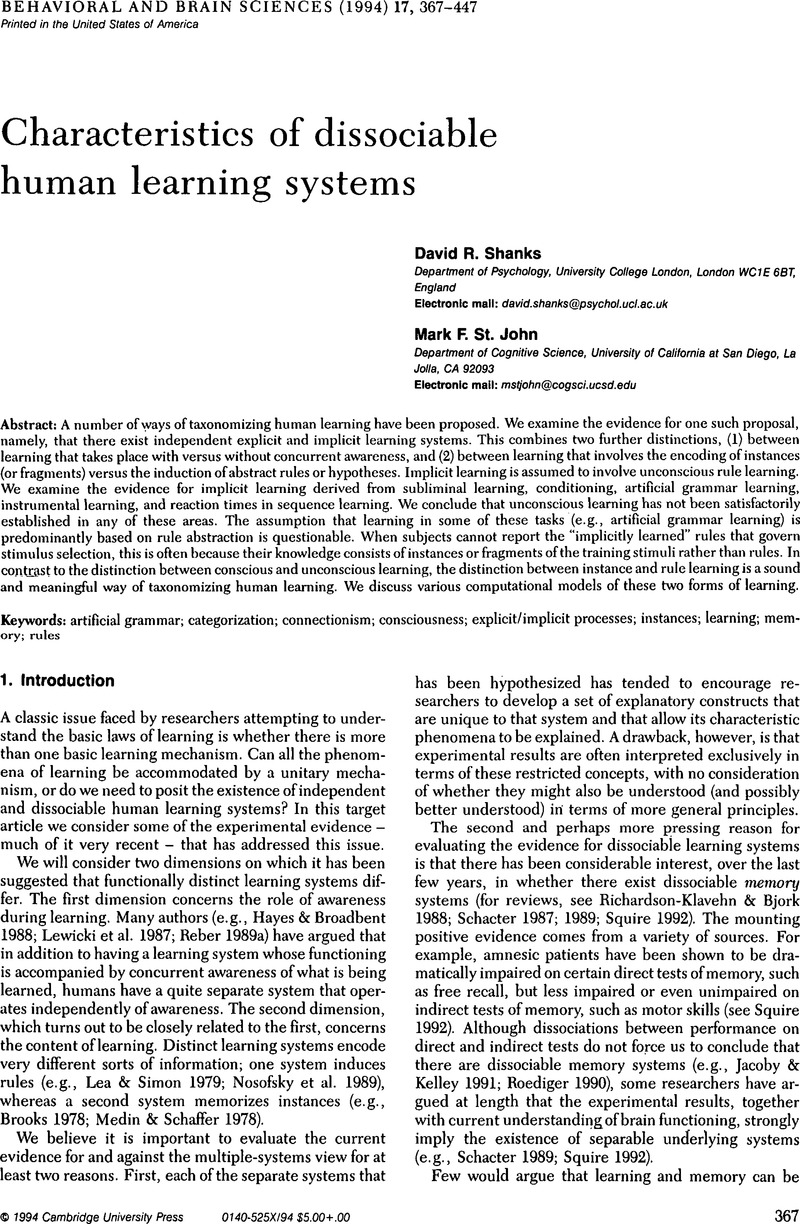Crossref Citations
This article has been cited by the following publications. This list is generated based on data provided by Crossref.
Geddes, Bruce W.
and
Stevenson, Rosemary J.
1997.
Explicit Learning of a Dynamic System with a Non-salient Pattern.
The Quarterly Journal of Experimental Psychology Section A,
Vol. 50,
Issue. 4,
p.
742.



